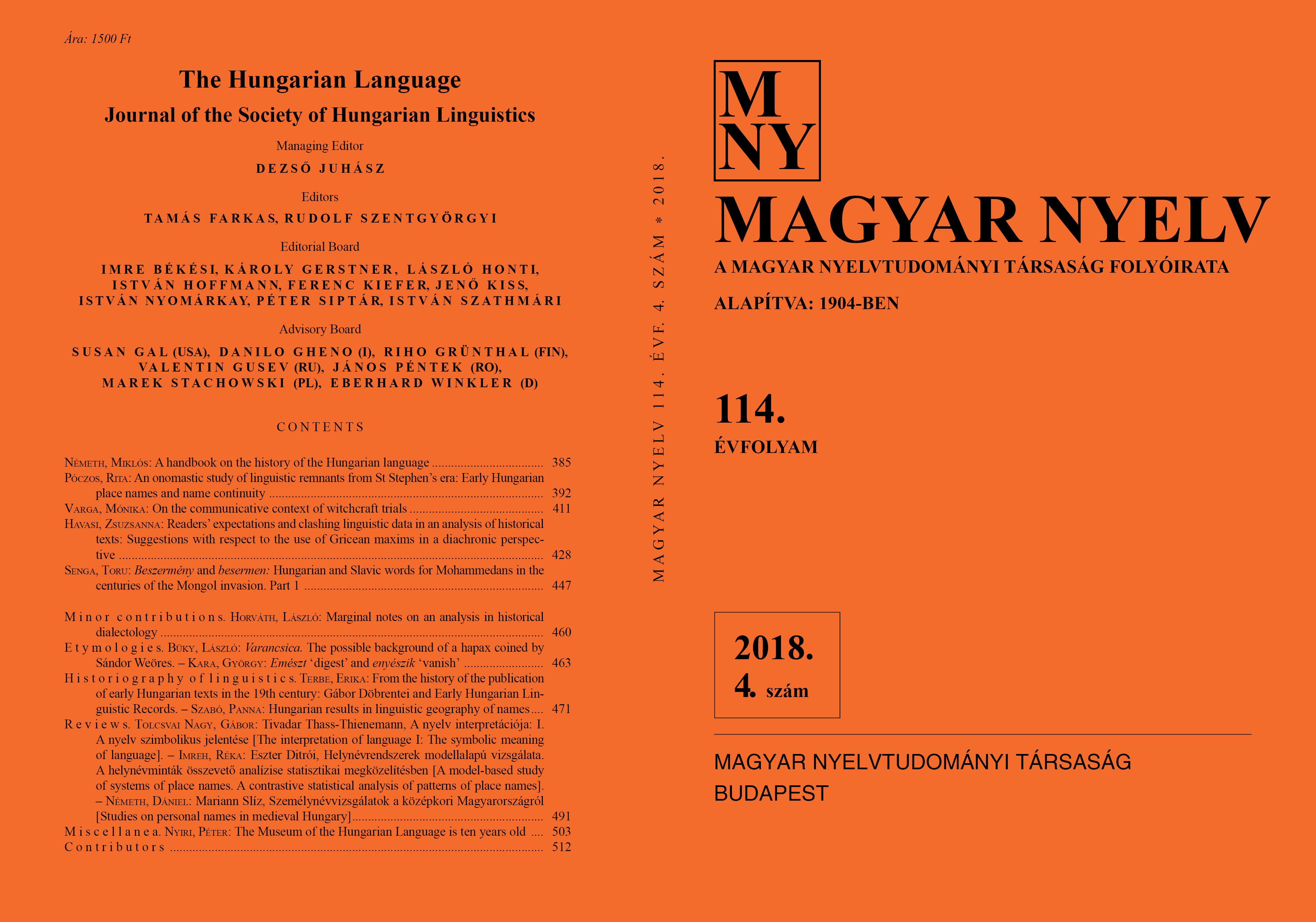Hungarian results in the linguistic geography of names
DOI:
https://doi.org/10.18349/MagyarNyelv.2018.4.482Keywords:
linguistic geography, geography of place names, geography of personal namesAbstract
The linguistic geography of names is a discipline studying the geographical distribution and characteristics of certain types of names or individual names. It is a research topic closely associated with the broader area of linguistic geography. One of its major aims is to explore interconnections across systems of names but its tasks also include the study of geographical aspects of any phenomenon that is embodied in proper nouns. The paper surveys the sources of Hungarian onomastic geography and the research methods and results of the geography of place names and the geography of personal names of that language.
Downloads
Published
Issue
Section
License
Copyright (c) 2024 Panna Szabó

This work is licensed under a Creative Commons Attribution-NonCommercial-NoDerivatives 4.0 International License.
Magyar Nyelv is a Diamond Open Access periodical. Documents can be freely downloaded and duplicated in an electronic format, and can be used unchanged and with due reference to the original source. Such use must not serve commercial purposes. In the case of any form of dissemination and use, Hungarian Copyright Act LXXVI/1999 and related laws are to be observed. The electronic version of the journal is subject to the regulations of CC BY-NC-ND (Creative Commons – Attribution-NonCommercial-NoDerivatives).
The journal permits its authors, at no cost and without any temporal limitation, to make pre-print copies of their manuscripts publicly available via email or in their own homepage or that of their institution, or in either closed or free-for-all repositories of their institutions/universities, or other non-profit websites, in the form accepted by the journal editor for publication and even containing amendments on the basis of reviewers’ comments. When the authors publicize their papers in this manner, they have to warn their readers that the manuscript at hand is not the final published version of the work. Once the paper has been published in a printed or online form, the authors are allowed (and advised) to use that (post-print) version for the above purposes. In that case, they have to indicate the exact location and other data of the journal publication. The authors retain the copyright of their papers; however, in the case of an occasional secondary publication, the bibliographical data of the first publication have to be included.



